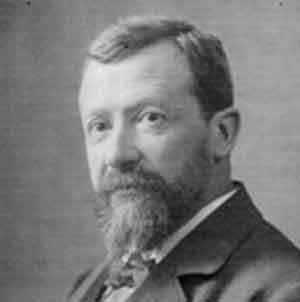.
Otto Hölder

Johannes Otto Ludwig Hölder (December 22, 1859 - August 29, 1937) was a German mathematician born in Stuttgart.
Hölder first studied at the Polytechnikum (which today is the University of Stuttgart) and then in 1877 went to Berlin where he was a student of Leopold Kronecker, Karl Weierstraß, and Ernst Kummer.
He is famous for many things including: Hölder's inequality, the Jordan–Hölder theorem, the theorem stating that every linearly ordered group that satisfies an Archimedean property is isomorphic to a subgroup of the additive group of real numbers, the classification of simple groups of order up to 200, and Hölder's theorem which implies that the Gamma function satisfies no algebraic differential equation. Another important notion related to his name is the Hölder condition which is used e.g. in the theory of partial differential equations and function spaces.
In 1877, he entered the University of Berlin and took his doctorate from the University of Tübingen in 1882. The title of his doctoral thesis was "Beiträge zur Potentialtheorie" ("Contributions to potential theory"). He worked at the University of Leipzig from 1899 until his retirement.
See also
* Hölder mean
See also: Hölder (disambiguation) and Hölder (surname)
References
* O'Connor, John J.; Robertson, Edmund F., "Otto Hölder", MacTutor History of Mathematics archive, University of St Andrews, http://www-history.mcs.st-andrews.ac.uk/Biographies/Holder.html .
* Otto Hölder at the Mathematics Genealogy Project
Retrieved from "http://en.wikipedia.org/"
All text is available under the terms of the GNU Free Documentation License


